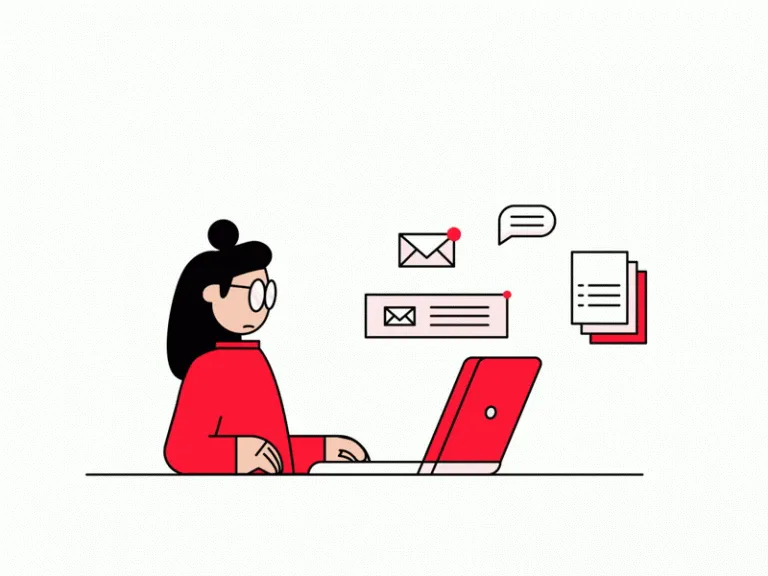5 Reasons to Use Animated Transitions in Mobile Apps
Motion graphics improves mobile user experience and became an integral part of mobile app design. It makes the UX more appealing and ensures a smooth change in the interface. While switching between functions or tapping on the menu bar in a mobile app, animated transitions add a feeling of interacting with each design element — no sense of “glitching” or rapid movement.
But adding a more appealing, aesthetic look to a mobile app isn’t the only reason why you should add animated transitions. There are several way more significant factors to consider. Let’s go through the main ones!
Signify Functional Change
A functional change occurs after a user has interacted with an app element. The most common example is a “Remember me” or “Subscribe to newsletter” toggle. It can also change the user status as they use it in Slack: Online, On Vacation, On a Call, etc.
Sometimes, it’s not necessarily there to emphasize the change of functions or enable the new ones. For example, this could work for altering the color theme (light/dark) or the mode (e.g., incognito or public).
Plus, you may add it if there’s a video integration in your app. The “Stop / Play” animated button is way more convenient than clicking on two different buttons every time to watch or pause a video file.
This type of animation helps users clearly see what they’ll get after completing a specific activity. It’s important to enable quick access to it so users get to submit or revert such actions at ease.
Define System Status
Users need to see a response to their actions while using mobile apps — animated transitions are a perfect way of doing so. This way, customers know that your system has received a query and started processing it.
So, with the system status definitions, app users can make sure of the following:
- The page or content is uploading. Animation helps shorten waiting time and makes sure people won’t leave the page earlier
- Action confirmation. This may be submitting a submission, completing the profile, or approving the payment
- Content update. This type of animation helps customers see that their request is up and running and that the system is already working on it (e.g., to load or refresh the page)
Reduce Cognitive Load
Cognitive load is the amount of effort a user puts into understanding an app and interacting with it. No wonder the bigger the load, the less interested a person becomes in using your solution.
To reduce the level of cognitive load, try implementing explanatory animation, floating labels in contact or submission forms, buttons, and screen loading elements. This will facilitate app usage and increase intuitiveness for most users.
Nobody likes complex, hard-to-navigate apps with no clear guidance for specific actions. Animation eases the outlook of every section of your solution and at the same time, boosts its attractiveness to more potential customers as it simplifies a range of actions.
Emphasize New Elements
When you want to introduce a new feature or tool in your mobile app, animated transitions will help you out. This may pop up as a notification, a “vibrating” new button, etc. Nothing wouldn’t show any change in a mobile solution better than motion.
For example, app developers use such animation for showing users what they’ve implemented in the new app update or what’s been fixed. It’s also a great way to highlight the necessary functions most users would likely use in the app.
Add cohesion to a multi-step process
While using a mobile app, you might go through several stages to complete a particular action. The most obvious example? Registering a user account in a system. With animation, you can show the whole journey and explain how to complete all the steps.
One other perk of implementing animation into multi-step operations is minimizing the number of tasks or data a user has to complete or process at once. App developers may also use it to lower the amount of data a user sees on a particular page.
For instance, you want to look through some options in a food delivery app. To get information about the meal’s ingredients, you should simply click on it, and the animation will nicely reveal its contents.
Final Thoughts
Animated transitions are about more than just creating a better appeal to your video for mobile apps. It’s a significant component in the following:
- Providing smoother UX
- Connecting the elements of complex processes
- Bringing sense to every step of the user journey
- Clarifying the status of a given element or operation
Our team at Explain Ninja creates explainer videos that help transmit proper messages to your customers and boost your media presence. If you have something to deliver to your potential and real clients, drop us a line, and we’ll figure it out!


